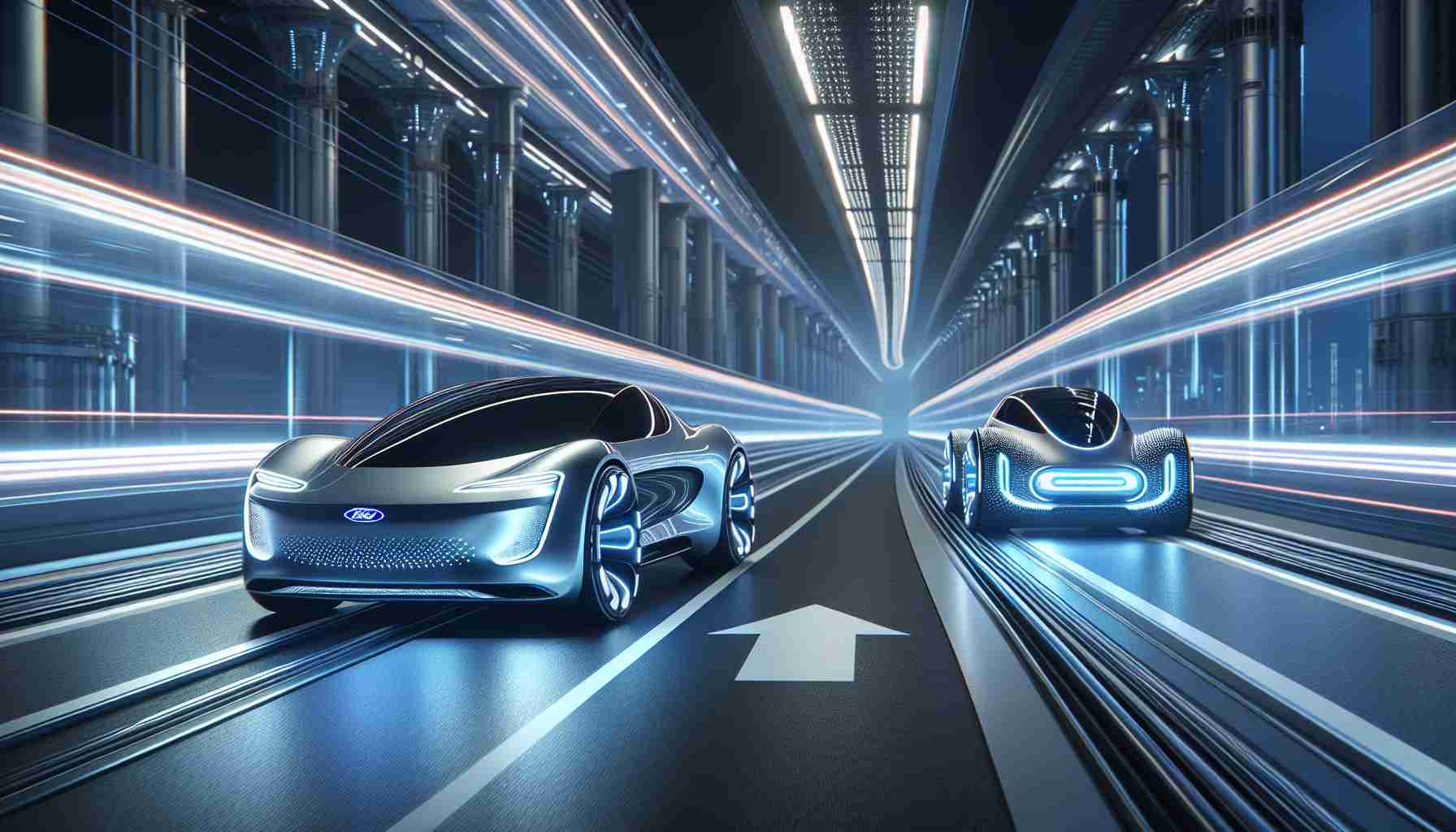- General Motors and Ford are innovating in the electric vehicle (EV) sector, crafting advanced technologies to compete with Tesla and other global players.
- Ford proposes a modular battery system that simplifies replacement and enhances sustainability, coupled with immersion-cooling technology to prevent overheating.
- Ford’s concept of automated battery-swapping stations promises improved convenience by enabling seamless battery swaps or charges.
- GM focuses on enhancing charging efficiency through a dual-port system that allows for faster and potentially shared power top-ups.
- Both companies’ innovations signal their commitment to staying competitive in a rapidly changing automotive market, aiming to challenge leaders like Tesla.
General Motors and Ford are making waves in the realm of electric vehicle innovation, echoing a new chapter in Detroit’s storied automotive legacy. As Tesla and Chinese titans like NIO command attention, these American stalwarts are quietly crafting their own revolutionary blueprints, as evidenced by tantalizing patent filings that flicker with promise.
Ford has envisioned an electric vehicle battery system that defies convention. Picture a sophisticated, modular pack design nestled within the vehicle’s floor, allowing individual units to be easily isolated and replaced. Spring-loaded connectors unlock a symphony of removal and installation ease, poised to slash repair costs and elevate sustainability. This modular miracle harmonizes with cutting-edge immersion-cooling technology, potentially quelling the fiery specter of thermal runaway.
Meanwhile, on another front, Ford’s audacious take on battery-swapping stations could redefine convenience. Imagine an EV backing into a station where its rear-located battery swaps or charges in a seamless dance of automation. It’s a fusion of innovation reminiscent of a sci-fi flick, but imminently real.
Not to be outdone, GM eyes a breakthrough in charging speeds. Envision a dual-port system ushering in faster power top-ups for mighty EVs. This dynamic duo of charging and energy sharing could potentially energize numerous vehicles from a single source, painting a picture of a electrified future.
As competition in the EV market ramps up, these visionary strides signal Ford’s and GM’s unwavering commitment to innovation in an electrifying era. It’s a bold move to stay relevant in a rapidly transforming automotive landscape, harnessing technology that could one day dethrone even perennial disruptors like Tesla.
Welcome to the dawn of tomorrow’s roads, where Detroit doesn’t simply roll along with history—it accelerates into it.
How GM and Ford are Revving Up the Future of Electric Vehicles: What You Need to Know
How-To Steps & Life Hacks
Maintaining Your Modular EV Battery System:
1. Regular Inspection: Routinely check your vehicle’s battery status via your car’s display or mobile app, ensuring it operates below critical warning levels.
2. Module Replacement: Utilize Ford’s innovative modular system by replacing only the defective battery cells instead of the entire unit. Ensure you visit an authorized service station for swaps handled via spring-loaded connectors.
3. Cooling System Checks: Keep an eye on immersion cooling systems to prevent overheating—seek professional help if irregularities are noticed.
Real-World Use Cases
Battery-Swapping Stations in Urban Centers:
– These stations could rapidly change the urban EV landscape, reducing downtime for taxi or ride-share operators.
– Ideal for delivery businesses requiring high uptime with minimal time spent charging vehicles.
Market Forecasts & Industry Trends
Accelerating EV Integration:
– Market Predictions: Analysts foresee the EV market potentially exceeding $800 billion by 2027. Innovations from key players like GM and Ford are likely to capture significant market share.
– Trend Insights: Increasing investment into infrastructure, such as charging and swapping stations, aligns with the global push towards clean energy solutions.
Reviews & Comparisons
Ford vs. GM in the EV Arena:
– Ford Advantages: Their modular battery system provides flexibility and potential cost savings. Innovative swapping stations aim at reducing charging time significantly.
– GM Strengths: Pioneering dual-port charging systems to cut down on charge times, potentially leading the market in charging efficiency.
Controversies & Limitations
– Infrastructure Challenges: While battery-swapping offers speed, its broad adoption requires significant investment in compatible infrastructure.
– Environmental Impact: While modular batteries improve sustainability, production and disposal of additional components must be managed properly.
Features, Specs & Pricing
– Modular Battery Systems: Allows individual cell replacements, equipped with immersion cooling for increased safety.
– Dual-Port Charging: GM’s venture into faster charging solutions with dual-port options.
Security & Sustainability
– Security Measures: Both companies employ state-of-the-art digital security for vehicle systems and battery management to mitigate hacking risks.
– Sustainability Efforts: Immersion cooling and modular design reduce long-term waste, aligning with broader environmental goals.
Insights & Predictions
– Future of EVs: Expect an increase in smart, AI-driven diagnostics and maintenance facilities. A surge in strategic partnerships between automakers and tech firms is likely, enhancing innovation and customer experience.
Tutorials & Compatibility
Best Practices for Maximizing Your EV’s Capability:
– Software Updates: Regularly update your vehicle’s software to optimize battery performance and introduce new features.
– Compatibility Tips: Check for compatibility of aftermarket accessories with Ford’s or GM’s modular systems before purchase.
Pros & Cons Overview
Pros:
– Potential cost savings from modular systems.
– Reduced downtime with battery-swapping.
– Faster charging capabilities.
Cons:
– Infrastructure for swapping stations is not yet widespread.
– High initial investment for sophisticated systems.
Actionable Recommendations
1. Stay Informed: Follow updates from Ford and GM to keep abreast of upcoming features and tech developments.
2. Embrace Innovation: Consider investing in vehicles with modular systems for long-term savings and sustainability.
3. Support Infrastructure Development: Advocate for local policies that support the development of charging and swapping stations.
For further resources, you may explore leading automotive companies like Ford and GM.
In conclusion, GM and Ford are not just witnesses to the unfolding EV revolution—they are pivotal drivers paving the way. By staying ahead of industry trends, they are poised to lead the charge in the race towards more sustainable and efficient transportation solutions.
